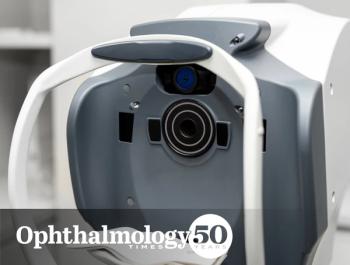
Distinguishing Bardet-Biedl syndrome from nonsyndromic inherited retinal diseases
Widefield fundus autofluorescence detects subtle findings, which can result in better outcomes.
Widefield fundus autofluorescence (FAF) can be very useful for confirming the diagnoses of rare disorders. Bardet-Biedl syndrome (BBS) is a disorder in which the affected patients can be obese and have hypogonadotropic hypogonadism, polydactylism, developmental delay, genitourinary abnormalities, renal disease, and retinal degeneration.
Kimberly Stepien, MD, associate professor of ophthalmology in the Department of Ophthalmology and Visual Sciences at the University of Wisconsin-Madison, explained that patients with BBS can often receive a misdiagnosis of a nonsyndromic disease, such as retinitis pigmentosa, despite having potentially life-threatening syndromic findings. These misdiagnoses can result in delayed screening for systemic problems. The retinas in patients with BBS can have findings that appear similar to those in patients with retinitis pigmentosa, such as classic bone spicules. However, more subtle retinal degenerative changes can be missed during a clinical examination.
“Widefield FAF can highlight peripheral degeneration and macular atrophy,” she said.
BBS study
Stepien and colleagues reviewed the charts of 9 patients aged 18 to 65 years with genetically confirmed BBS for the medical and ocular histories, findings from the clinical examinations, and ocular imaging, including widefield Optos color fundus photos, FAF, and spectral domain optical coherence tomography.
The investigation found that before BBS was diagnosed, two-thirds of patients (6 of 9) received a diagnosis of a nonsyndromic inherited retinal disease despite the presence of systemic abnormalities and/or family histories that suggested a syndromic disease.
The examination of the 6 patients with a misdiagnoses showed only subtle peripheral pigment changes.
Widefield FAF showed varying patterns of speckled hypo-FAF in the periphery of all patients with BBS. In addition, macular abnormalities (ie, macular atrophy and bull’s-eye maculopathy) were seen in all patients and were highlighted by variable FAF changes, Stepien reported.
The investigators concluded, “Patients with BBS are often misdiagnosed with nonsyndromic disease despite having potentially life-threatening syndromic findings.
Along with detailed medical and family histories, specific imaging findings on wide-field FAF can aid in the diagnosis of BBS in adult patients with suspected inherited retinal diseases by better delineating macular degeneration patterns and unearthing extensive peripheral hypo-FAF changes when clinical examinations findings are subtle.”
Kimberly Stepien, MD
This article is adapted from Stepien’s presentation at the Women in Ophthalmology 2021 Summer Symposium. She has no financial interest to disclose.
Newsletter
Don’t miss out—get Ophthalmology Times updates on the latest clinical advancements and expert interviews, straight to your inbox.
















































.png)


